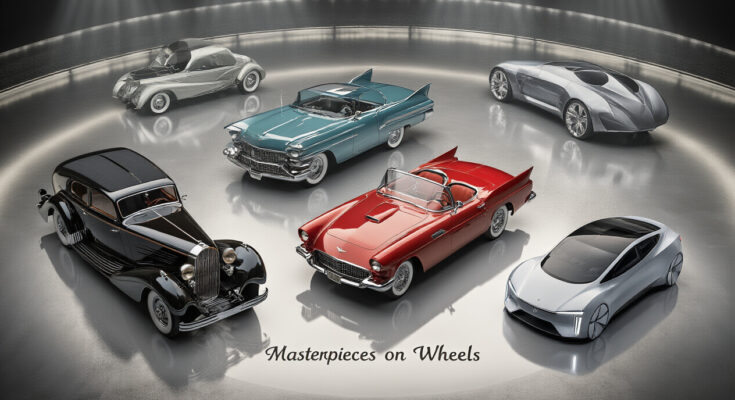Ever wondered why certain cars make your neck snap as they drive by? It’s not just the engine purr. It’s that indefinable quality where engineering and artistry collide – pure automotive sex appeal.
For every practical sedan clogging our highways, there’s a car so breathtakingly gorgeous it belongs in a museum. These stylish cars transcend transportation; they’re rolling sculptures that define eras and capture imaginations.
I’ve spent decades obsessing over these mechanical masterpieces, from the curvaceous pre-war Bugattis to today’s hypercar hellions. What makes them special isn’t just speed or luxury – it’s their ability to make you feel something visceral the moment you see them.
So which designs truly deserve automotive immortality? The answers might surprise even the most dedicated gearheads.
Defining Automotive Style: What Makes a Car Iconic?
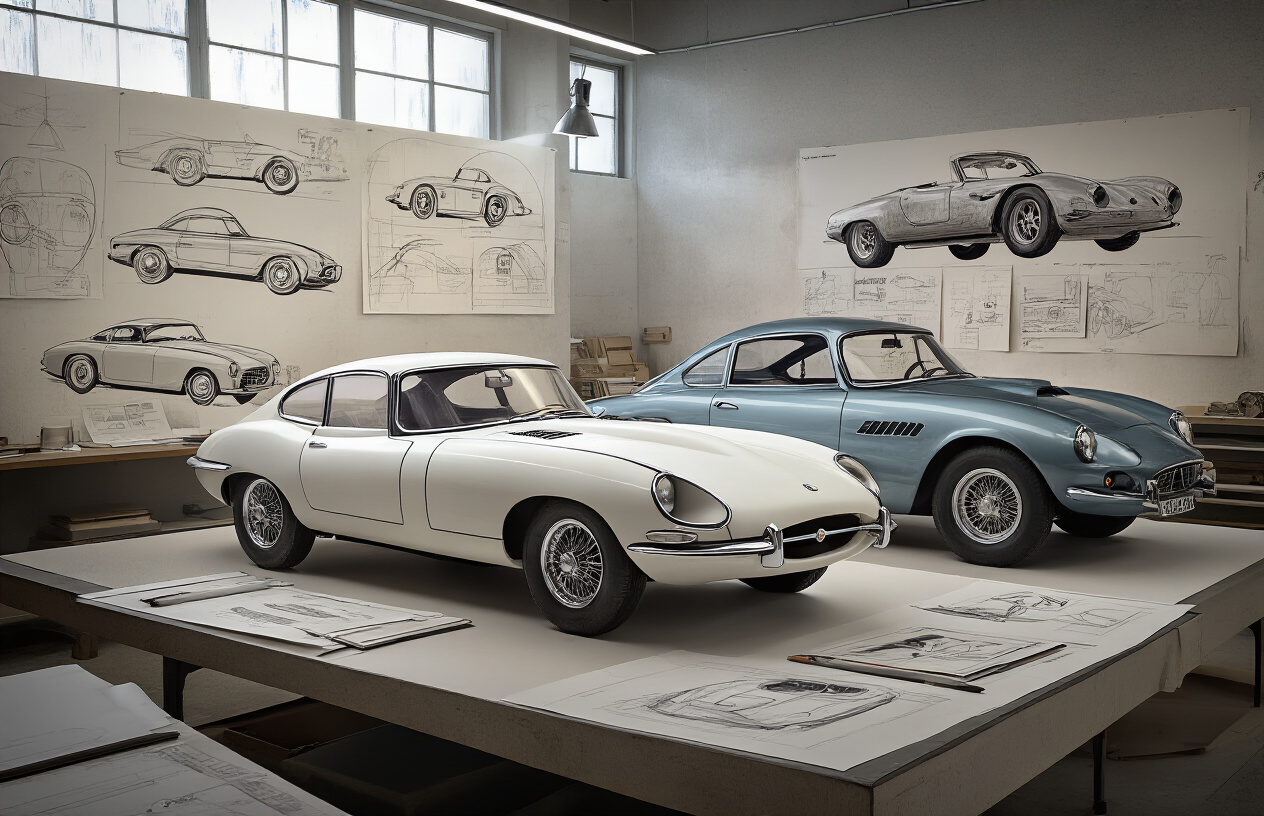
The Perfect Balance of Form and Function
Ever noticed how the most beautiful cars also seem to perform the best? That’s no accident.
When Enzo Ferrari famously said, “Race cars are neither beautiful nor ugly. They become beautiful when they win,” he was only half right. The truth is, the most iconic cars nail both looks and performance.
Take the Jaguar E-Type. When it launched in 1961, it wasn’t just drop-dead gorgeous—it could hit 150 mph when most family cars struggled to reach 70. Even Enzo himself called it “the most beautiful car ever made.”
Great automotive design isn’t about slapping on chrome or adding flashy wings. It’s about creating shapes that work with physics, not against it.
Timeless Design Elements That Define Elegance
What makes a car’s design stick around for decades while others fade faster than last season’s fashion trends?
Clean lines. Proportional balance. Distinctive character. These aren’t just designer buzzwords—they’re the DNA of every truly timeless automobile.
Look at the Porsche 911. Its silhouette has remained recognizable for nearly 60 years while constantly evolving. That’s not stubbornness—that’s knowing when you’ve created something perfect.
Other timeless elements include:
- Purposeful stance
- Cohesive design language
- Distinctive face/grille
- Perfect proportions
Cultural Impact: How Stylish Cars Shape Our Perception
Cars aren’t just transportation—they’re moving cultural artifacts.
The Lamborghini Countach didn’t just influence car design; it became the poster child of 1980s excess and ambition. Every kid with that poster on their bedroom wall wasn’t just dreaming of a car—they were buying into an entire lifestyle and attitude.
James Bond wouldn’t be James Bond without his Aston Martin. The Batmobile defines Batman as much as his cape and cowl. These vehicles transcend their mechanical purposes to become cultural icons.
Innovation vs. Tradition in Automotive Design
The eternal tug-of-war in car design: push boundaries or respect heritage?
The boldest designs often face initial rejection. When BMW’s Chris Bangle introduced his controversial “flame surfacing” in the early 2000s, enthusiasts nearly rioted. Today? Those designs influenced an entire generation of vehicles.
Meanwhile, brands like Aston Martin and Bentley walk a tightrope—evolving while maintaining their distinctive DNA. One radical design could alienate loyal customers, while too much conservatism risks irrelevance.
The magic happens when designers find that sweet spot—respecting tradition while embracing the future. It’s why the Ford GT works so brilliantly. It honors its 1960s predecessor while being thoroughly modern in every way.
The Golden Age of Automotive Design (1930s-1960s)
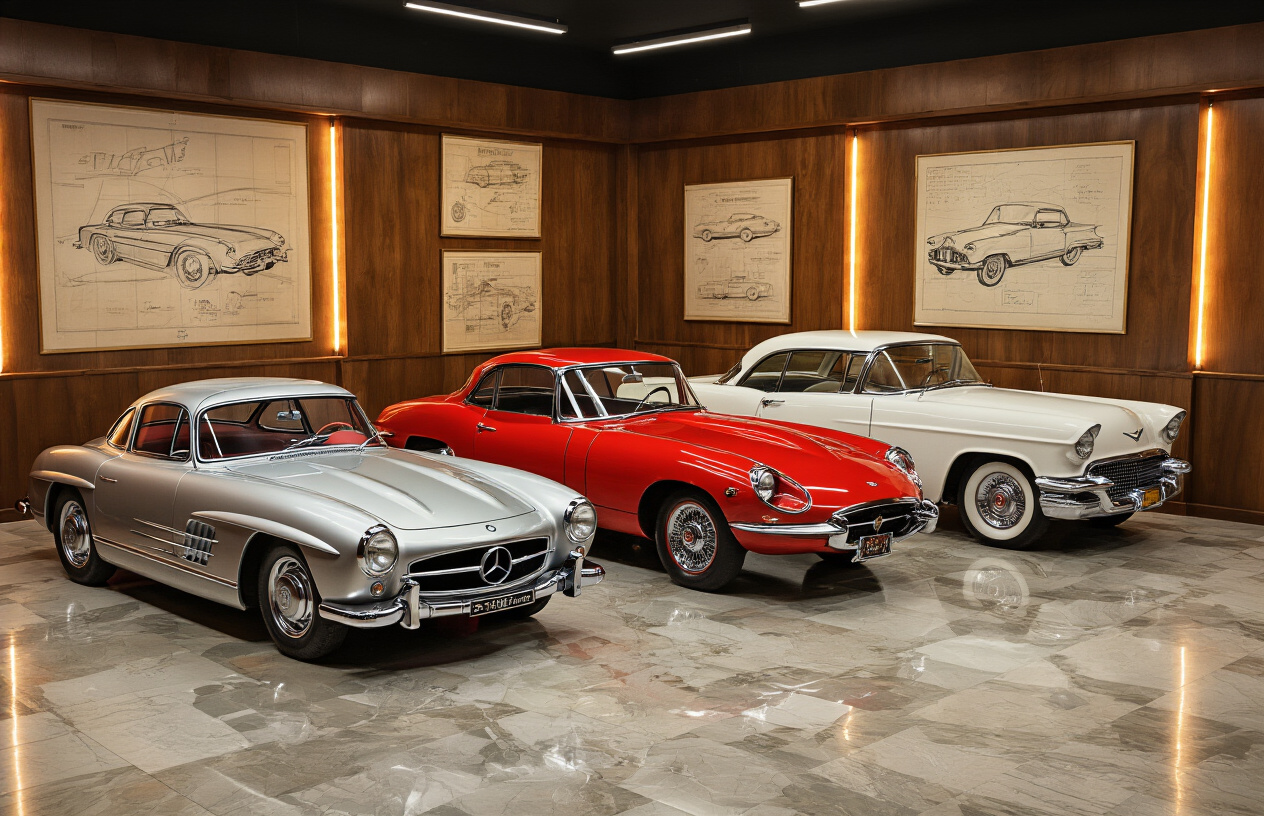
Art Deco Influences: The Birth of Automotive Styling
Car design wasn’t always sexy. Early automobiles were basically horseless carriages—clunky, boxy things built by engineers who cared more about function than form.
Then the 1930s hit, and everything changed.
Art Deco swept through architecture, fashion, and yes, cars. Suddenly, vehicles weren’t just transportation—they were rolling sculptures. Swooping fenders, teardrop shapes, waterfall grilles—this was the good stuff.
The 1937 Talbot-Lago T150-SS “Teardrop Coupe” wasn’t just a car; it was wearable art. Only 12 were made, and each one looked like it was moving at 100 mph while standing still.
Post-War Design Revolution: Chrome, Fins, and American Optimism
The 1950s weren’t subtle. America was riding high after WWII, and its cars showed it.
Chrome? More please. Tailfins? Make ’em bigger. Colors? Why not pink?
The 1959 Cadillac Eldorado Biarritz flaunted fins that would make a shark jealous. This wasn’t transportation—it was theater.
Harley Earl and his GM design team weren’t just making cars—they were capturing American dreams in sheet metal. They understood something crucial: people don’t just drive cars; they live their lives in them.
European Elegance: Ferrari, Jaguar, and the Sports Car Renaissance
While Americans were going bigger, Europeans took a different route.
The Ferrari 250 GTO wasn’t just fast—it was beautiful in that “I might cut myself if I touch it” kind of way. Only 36 were built, and today they sell for north of $48 million.
Jaguar’s E-Type made Enzo Ferrari call it “the most beautiful car ever made.” Not bad coming from your competition.
These weren’t family cars. They were statements—low-slung, perfectly proportioned objects of desire that made grown men (and women) weak in the knees.
Breakthrough Models That Changed Car Design Forever
Some cars don’t just look good—they change everything that comes after them.
The 1961 Lincoln Continental with its suicide doors and clean lines killed chrome excess overnight. The 1963 Porsche 911 created a silhouette so perfect they’ve barely changed it in 60 years.
The Citroën DS looked like it came from 2020, not 1955. When it debuted at the Paris Motor Show, Citroën took 12,000 orders in the first day. People literally gasped when they saw it.
These weren’t just pretty faces—they were revolution on wheels.
Celebrity Cars: When Style Met Star Power
When James Dean bought his Porsche 550 Spyder (nicknamed “Little Bastard”), he wasn’t just buying a car. He was cementing his rebel image.
Steve McQueen’s Highland Green 1968 Mustang GT from “Bullitt” became as famous as he was. Elvis’s pink Cadillac. Marilyn’s 1956 Ford Thunderbird.
These celebrities could’ve driven anything, but they chose cars that amplified who they were. The relationship worked both ways—the cars became more desirable because of who drove them.
The golden age wasn’t just about beautiful lines and chrome details. It was about cars becoming part of our cultural fabric—objects of desire that said something about who we were or wanted to be.
Revolutionary Concept Cars That Pushed Boundaries
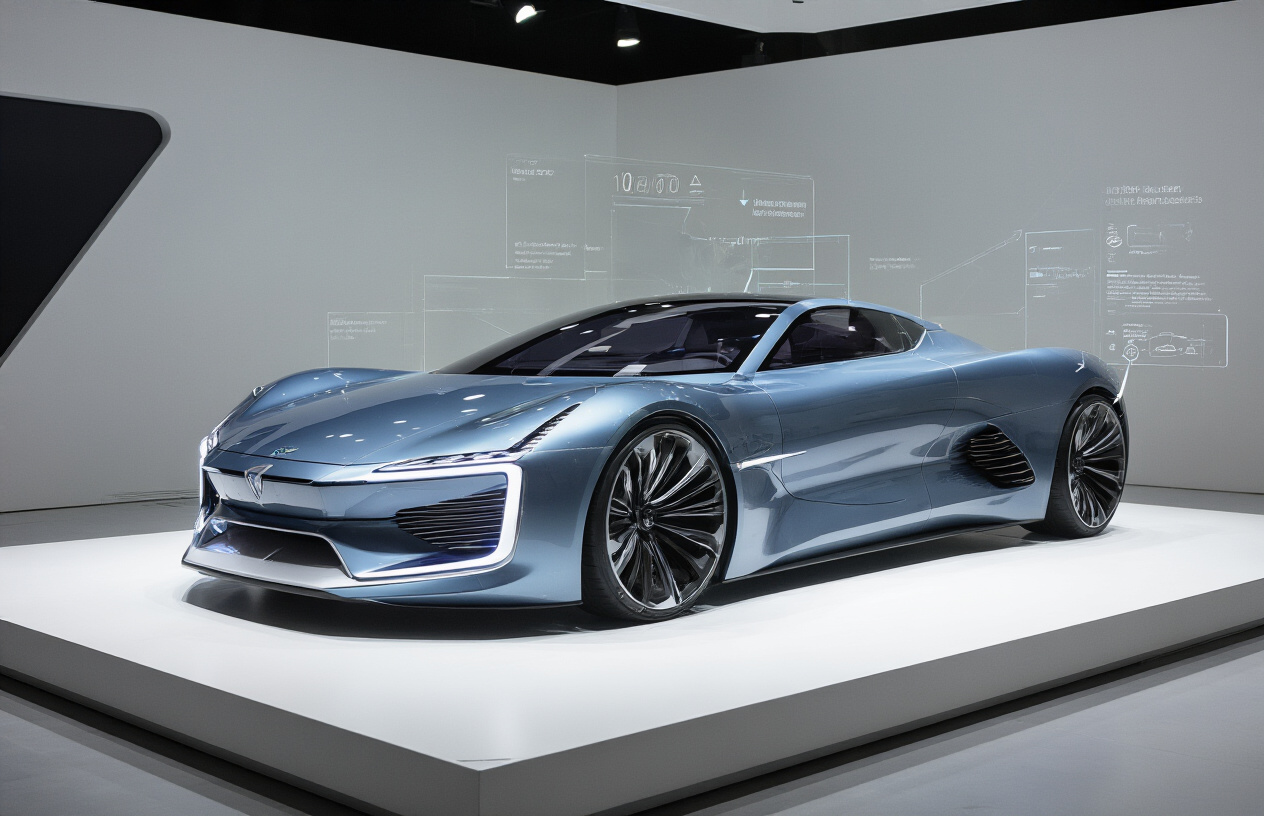
From Drawing Board to Reality: Concepts That Made Production
Car history is littered with “what could have been” designs, but some concept cars actually defied the odds and made it to production.
The Bugatti Veyron started life as the outrageous Veyron 18.4 concept in 1999. Everyone thought it was impossible to build – 1,000 horsepower? 250+ mph? Yeah, right. But Volkswagen Group basically said “hold my beer” and made it happen anyway.
Remember the Audi TT concept from 1995? The production version that followed in 1998 was practically a carbon copy. That’s practically unheard of in the industry, where bean-counters typically water down everything cool before it hits showrooms.
The BMW i8 went from the 2009 Vision EfficientDynamics concept to reality without losing its sci-fi swagger. Those butterfly doors and that spaceship silhouette? They made it through intact.
Not all transitions are perfect though. The Porsche 918 concept promised the moon and delivered… well, most of it. Same with the Lexus LC, which somehow retained about 90% of the jaw-dropping LF-LC concept’s drama.
Futuristic Visions That Were Ahead of Their Time
Some concept cars were so forward-thinking they practically needed a time machine to be understood.
The 1938 Buick Y-Job? First concept car ever. Period. It predicted design trends that wouldn’t appear until the 1950s. Talk about being early to the party.
Mercedes-Benz’s 1970 C111 looked like it came from another planet with its gullwing doors and experimental Wankel engine. Today it would fit right in alongside modern hypercars.
GM’s 1987 Sunraycer wasn’t just weird-looking – it was solar-powered when most automakers were still figuring out fuel injection. Two decades before Tesla made electric cars cool, GM’s EV1 concept showed us the future.
The 1970 Ferrari 512 S Modulo was so low and wedge-shaped it looked like it would slide under traffic. Its influence still shows up in supercars today.
Show-Stoppers: Concept Cars That Stole the Spotlight
Auto shows are battlefield royales for attention, and some concepts have absolutely dominated the competition.
The Cadillac Sixteen concept from 2003 made jaws hit floors with its 16-cylinder engine and neo-classical styling. People still talk about it nearly two decades later.
Lamborghini’s Terzo Millennio concept didn’t just look wild – it proposed storing electricity in the body panels themselves. That’s some Tony Stark level innovation.
The Mercedes-Benz Vision AVTR literally lets you control it with your mind. Not kidding. The car responds to your thoughts. If that’s not show-stopping, what is?
Buick’s Avista concept proved that even “boring” brands can create stunners – its reveal in 2016 had journalists rushing the stage like it was a rock concert.
And let’s not forget Aston Martin’s Valkyrie AMR Pro – a concept so extreme it makes regular hypercars look like economy cars. When it fired up at Geneva, you couldn’t hear yourself think. And nobody minded one bit.
The Italian Masters: Design Houses That Defined Elegance

A. Pininfarina’s Legacy of Flowing Forms
Ever noticed how some cars just make you stop and stare? That’s Pininfarina magic for you.
Founded in 1930 by Battista “Pinin” Farina, this design house has been responsible for some of the most breathtaking automotive silhouettes ever created. Their partnership with Ferrari alone has produced icons like the 250 GT, the Dino, and the modern masterpiece LaFerrari.
What makes Pininfarina special? It’s their uncanny ability to make metal flow like water. Their designs don’t just look good—they seem to move even when standing still. They pioneered the concept of aerodynamic elegance when others were still building boxes on wheels.
B. Bertone’s Bold Design Language
While Pininfarina whispers elegance, Bertone screams drama.
This design powerhouse gave us the knife-edge styling of the Lamborghini Countach and the wild, wedge-shaped Lancia Stratos. Bertone never played it safe—they pushed boundaries until they broke, then pushed some more.
Nuccio Bertone had this crazy ability to predict the future. The 1968 Alfa Romeo Carabo concept? It basically invented the supercar look that dominated the next two decades. The Lamborghini Miura? Simply the template for modern supercars.
C. Zagato’s Distinctive Signature Style
Zagato is the rebel of Italian design—the punk rocker in a room full of classical musicians.
Founded by Ugo Zagato in 1919, this Milan-based outfit brought aircraft construction techniques to automobiles, creating lightweight, aerodynamic bodies that performed as good as they looked. Their trademark “double bubble” roof isn’t just a style choice—it’s functional genius that adds headroom while maintaining aerodynamic efficiency.
Zagato-designed cars like the Aston Martin DB4 GT Zagato and Alfa Romeo TZ aren’t conventionally pretty. They’re challenging, distinctive, and utterly unforgettable.
D. How Italian Design Houses Transformed Global Automotive Aesthetics
The Italians didn’t just design cars—they rewrote the rules of beauty.
Before Italian design houses got involved, cars were engineering projects with bodies attached as afterthoughts. These maestros flipped the script, making form equal to function.
Their influence spread everywhere. The clean lines of Japanese sports cars? Thank Pininfarina. American muscle cars with their aggressive stances? Bertone’s influence. Even German precision machines borrowed Italian passion.
What these design houses understood was that cars aren’t just transportation—they’re rolling sculpture, emotional objects that speak to our souls. They brought art to the automotive world, transforming sheet metal into desire.
Modern Masterpieces: Contemporary Cars Setting New Style Standards
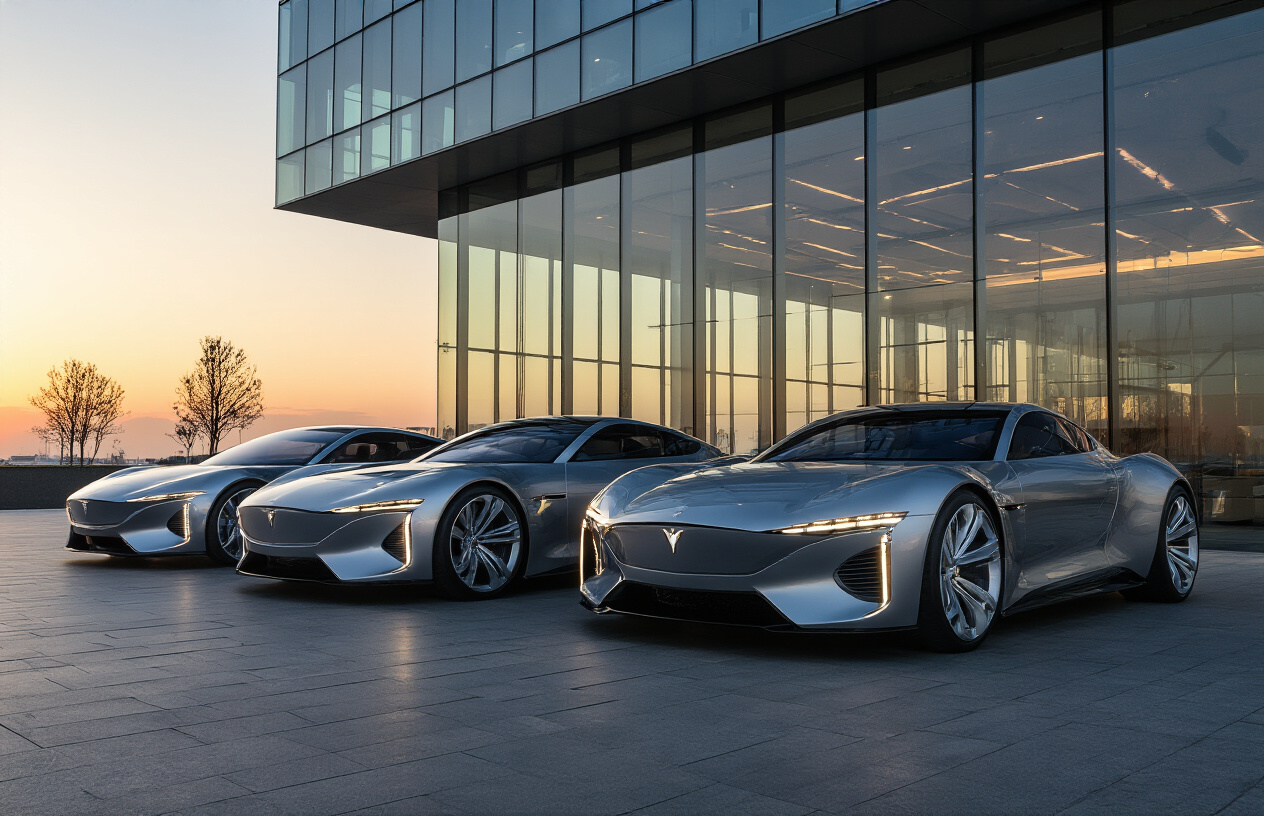
Minimalist Luxury: Less is More in Today’s Design Language
Gone are the days of cramming every possible feature into a car’s design. The real luxury now? Space. Emptiness. Breathing room.
Look at the Tesla Model 3. No buttons. No clutter. Just a steering wheel and a screen. That’s it. Some hate it, but millions love it. Why? Because it gives your brain a break from the visual noise we’re drowning in everywhere else.
Mercedes’ latest EQ lineup takes this even further. Clean surfaces that flow like water. No sharp edges screaming for attention. No fake vents pretending the car is something it’s not.
Porsche’s Taycan proves minimalism doesn’t mean boring. Its interior is almost empty compared to cars from ten years ago, yet it feels more special, not less.
The Japanese were early to this party. Mazda’s been doing the “less is more” thing for years. Their current designs have barely any character lines, yet somehow look more expensive than cars costing twice as much.
Electric Revolution: How EV Design is Breaking Conventions
EVs don’t need giant grilles. They don’t need long hoods. They don’t need exhaust pipes. So why keep pretending?
This freedom is unleashing creativity we haven’t seen since the 1950s.
Rivian’s trucks look like nothing else on the road – those vertical headlights would’ve been laughed out of design school ten years ago. Now they’re iconic.
Lucid Air turned the proportions of luxury sedans upside down. Lower, sleeker, with cabin space that defies its exterior dimensions.
Hyundai’s Ioniq 5 embraces its digital nature with pixel-like lights while somehow channeling 1980s hot hatches. It shouldn’t work. But it absolutely does.
Kia EV6 takes similar tech but wraps it in something completely different – proving platform sharing doesn’t mean visual cloning anymore.
The real revolution? These aren’t concept cars. They’re in dealerships right now.
Retro-Futurism: Reimagining Classic Designs for Today
The best designers know when to raid the archives.
Ford’s Bronco and Mustang Mach-E couldn’t look more different, but they’re both playing the same game – taking something familiar and warping it into tomorrow.
Alpine A110 resurrects a 1960s French icon but doesn’t fall into the retro trap. It feels both vintage and cutting-edge simultaneously.
Honda e is basically what people in 1970 thought we’d be driving in 2020 – tiny, cute, and impossibly futuristic while somehow looking retro.
Genesis X Speedium Coupe concept blends 1950s proportions with lighting that looks like it’s from 2050. The result? Timeless.
Morgan still builds cars with wooden frames in 2023, but their latest models incorporate just enough modern details to avoid feeling like museum pieces.
The best retro-futuristic designs aren’t photocopies of the past. They’re alternate timelines – what might have happened if history took a different turn.
Technology and Style: When Digital Features Enhance Visual Appeal
Digital doesn’t have to mean soulless.
Audi’s matrix LED headlights don’t just look cool – they perform welcome “dances” when you approach. Pure theater.
Mercedes Hyperscreen turns nearly the entire dashboard into display space, yet somehow feels less distracting than the button-fest dashboards of the 2000s.
BMW’s color-changing iX Flow uses E Ink technology to shift from white to black at the press of a button. Gimmicky? Maybe. Jaw-dropping? Absolutely.
Genesis uses 3D digital displays that track your eyes to create depth without glasses. It’s not just showing off – it actually helps keep information where you need it.
The coolest part? These tech features create emotional connections. My friend’s kid thinks her Audi “says hello” to her. That’s not a feature – that’s a relationship.
Bespoke Beauties: The Rise of Ultra-Exclusive Custom Designs
Ready to drop seven figures on a car? You’ll get more than just speed.
Rolls-Royce Boat Tail isn’t just custom paint and fancy wood. It’s an entirely new body, built for exactly three customers, with champagne coolers matched to the buyer’s favorite vintage.
Ferrari’s SP program will build you a completely one-off car – if they like your design vision and bank account, that is.
Bentley Mulliner revived coachbuilding traditions from the 1930s, creating the Bacalar – just 12 examples, each one different from the next.
The ultimate flex isn’t having the most expensive production car anymore. It’s having something nobody else can have at any price.
Even “regular” luxury brands are getting in on this. Lamborghini’s Ad Personam program goes way beyond choosing colors. Want your family crest embroidered in the exact thread color of your wedding dress? They’ll make it happen.
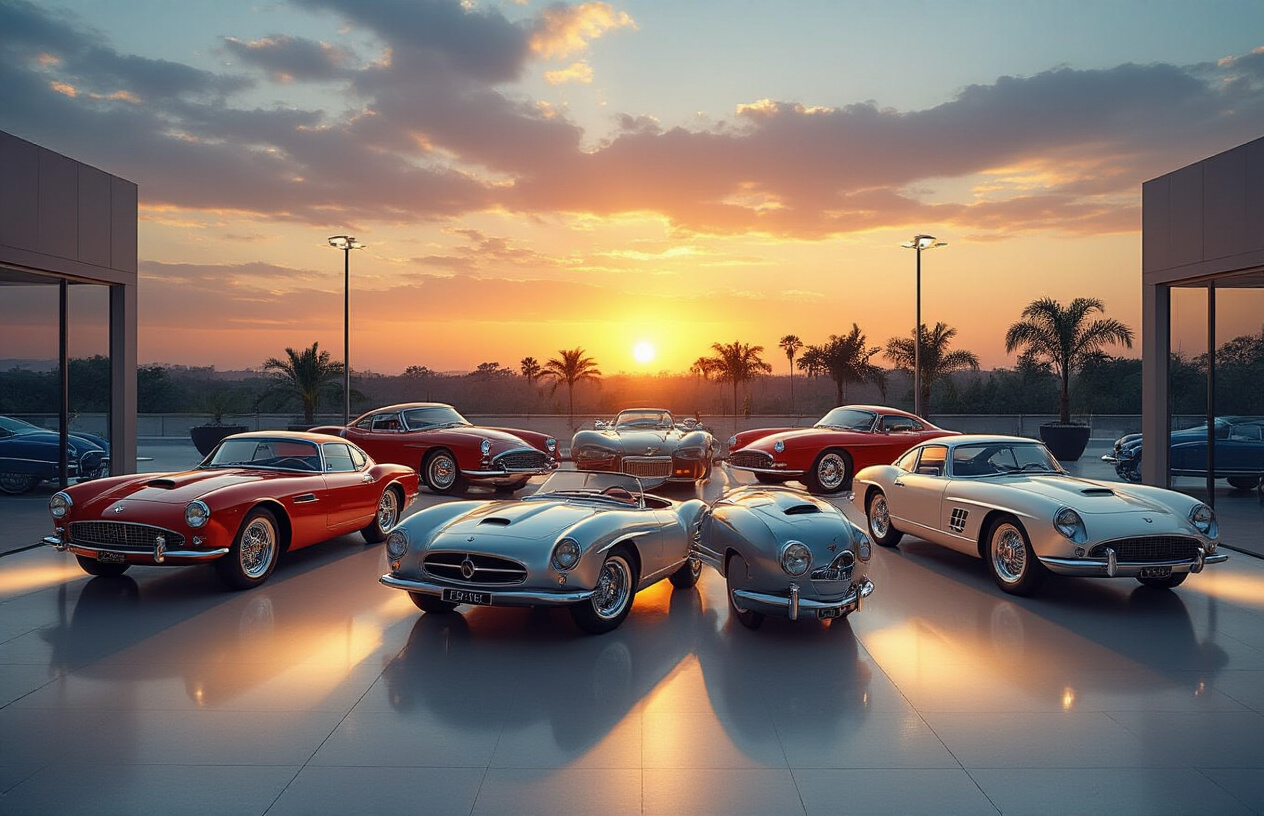
The journey through automotive design history reveals that truly iconic cars transcend mere transportation to become cultural symbols and works of art. From the sweeping curves of Golden Age classics to the boundary-pushing concepts that challenged convention, these masterpieces on wheels have captivated our imagination and defined eras. The Italian design houses, with their unmatched sense of elegance and proportion, continue to influence automotive aesthetics worldwide, while contemporary designers are creating tomorrow’s classics by blending innovation with timeless principles.
As we look at the most stylish cars ever built, we’re reminded that automotive design at its best represents the perfect marriage of form and function. Whether you’re an enthusiast, collector, or simply someone who appreciates beauty in motion, these rolling sculptures deserve recognition as significant cultural artifacts. The next time you spot a truly exceptional car, take a moment to appreciate not just its mechanical prowess, but the artistic vision and creative passion that transformed metal, glass and rubber into something transcendent.

